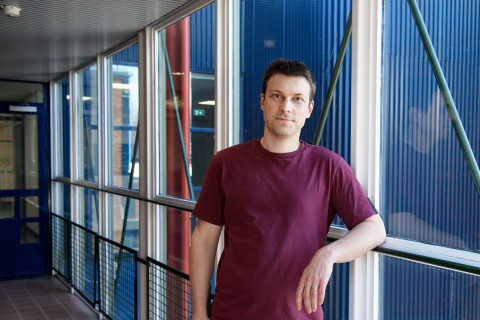According to Professor of Atmospheric Chemistry Siegfried Schobesberger, a lot can still be learned about the upper levels of the atmosphere.
Computational modelling helps us understand atmospheric measurement processes
Raised in Austria, Siegfried Schobesberger got his Master’s degree in physics from the University of Vienna in 2008, working on nano-droplet nucleation. Following that, he moved to the University of Helsinki to work on his PhD in the Division of Atmospheric Sciences (now INAR) under the tutelage of Professors Markku Kulmala, Douglas Worsnop and Tuukka Petäjä.
“My research there mainly revolved around molecular cluster composition measurements, using mass spectrometers, during the formation of new particles from vapours, especially at several big measurement campaigns at the CLOUD chamber at CERN.”
“I graduated in 2014 and then joined Joel Thornton’s lab at the University of Washington in Seattle to study the chemistry of organic trace gases and organic aerosol particles. I learned to use sophisticated inlet and sample treatment systems for chemical ionization mass spectrometers.”
In 2017, Schobesberger returned to Finland and joined the University of Eastern Finland. He has been working as 2017–2019 I was Assistant Professor and 2020–2023 Associate Professor (Tenure Track),
and was appointed full Professor in 2024.
Schobesberger’s current research has two focal points: one is on investigating the air-surface exchange (emissions and depositions) of atmospheric trace gases, the other is on studying the physics and chemistry of organic aerosol particles.
“My main tools are measurements using chemical ionization mass spectrometers. Together with them, I am also exploiting micrometeorological techniques for measuring exchange processes, and thermal desorption techniques for studying aerosol particle properties and compositions.”
“My research also includes instrument development work, mainly to improve measurement techniques, and computational modelling to help us understand the systems we are working on: air-ecosystem interactions, aerosol chemistry, as well as the actual measurement processes.”
For the future, Schobesberger hopes he can extend his activities to include airborne observations, which he already has gathered experience in. According to him, a lot can still be learned about atmospheric chemistry in the upper levels of the atmosphere.
“Ground-based measurements cannot reach these levels. However, an aircraft, either manned or unmanned, can easily cover a wide area with different conditions, environments and ecosystems,” Schobesberger notes.
Schobesberger’s research combines aspects of physics, chemistry, meteorology and environmental sciences.
“My roots, however, are in physics, and my research is nested in the university’s Department of Technical Physics. I believe that of all the natural science fields, physics is the most versatile,” he says.
Physics studies also provide an excellent basis for getting involved in other natural sciences during one’s career, and proceeding into various engineering fields is common as well. The studies combine technical skills, such as working with high-tech equipment, with thorough analytical and computational skills. The studies also teach excellent problem-solving skills that can be applied even more widely.
“To anyone who cares about how exactly the world works, I recommend giving physics a serious thought and try,” Schobesberger says.
In his free time, too, Schobesberger enjoys exploring the world by air, and he has a passion for aviation.
“I enjoy spending my free time with my family, and I also enjoy sports such as running, swimming, floorball, climbing and skiing.”
SIEGFRIED SCHOBESBERGER
Professor of Atmospheric Chemistry (1.1.2024–)
Key roles
Assistant/Associate Professor (tenure-track), University of Eastern Finland, 2017–2023
Research Associate, University of Washington, USA, 2015–2017
Marie Skłodowska-Curie Global Fellow, 2016
Doctor of Philosophy (Physics), University of Helsinki, 2009–2014
Marie-Curie Initial Training Network (CLOUD-ITN), 2009–2012
Current tasks
- Leading research on surface-air-aerosol interactions
- Teaching courses on atmospheric chemistry and aerosol physics





